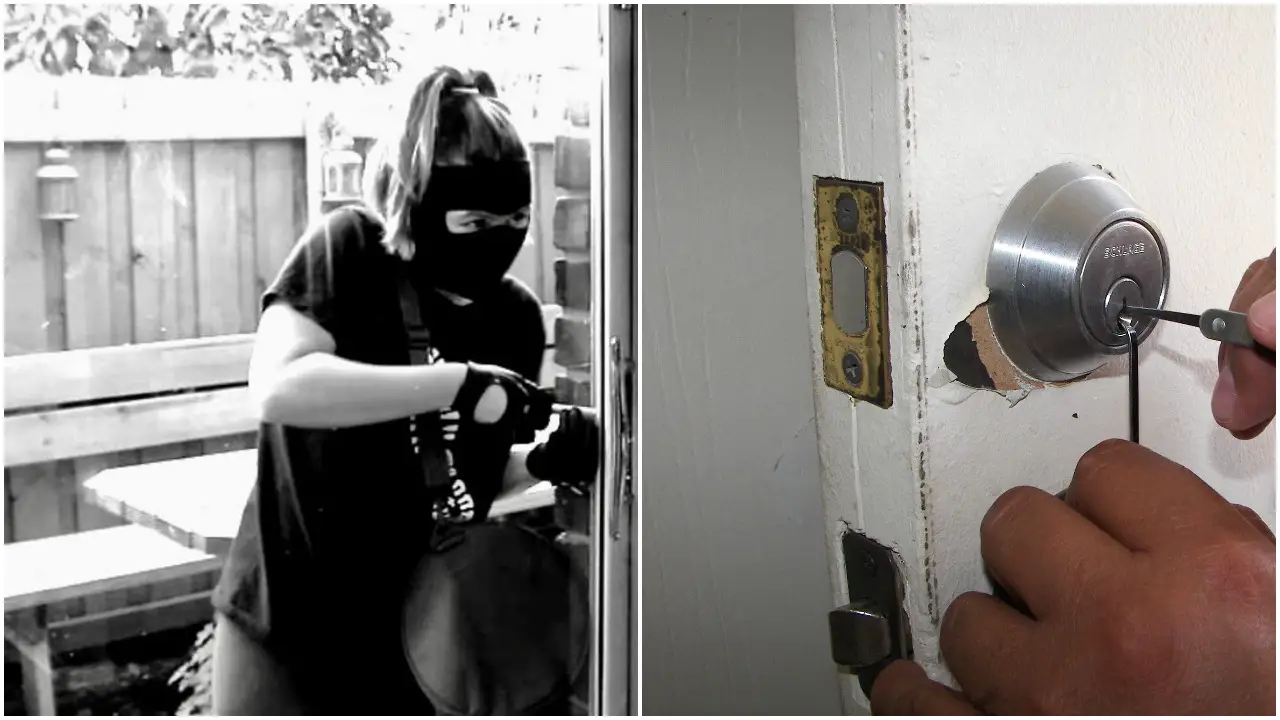If you’re looking to get a new lock for your front door, you may well have heard about bump proof, pick proof, and drill proof locks. What do they really mean?
In short, these are locks that could resist forced entry attacks such as lock picking, bumping, and drilling.
In this article, we look at how locks with these advanced security features work, and if they can actually protect your home from intruders. Let’s dive in!

Pick Proof Locks
Table of Contents
Although lock picking is now in the ‘bad books’, it was, for the most part, a means of opening a lock when you misplace your keys.
As you know, lock picking is common, and one can easily pick a lock using a hairpin, paper clip, or other lock picking tools.
Unfortunately, this method of opening a lock without a key had since been adopted as a major break-in technique, hence pick proof locks.
Pick proof locks are equipped with advanced security features that make lock picking impossible. Since lock picking targets the pins in a lock, pick-proof locks usually come with more pins, a shield, and recently SmartKey Security that protects against picking.
Bump Proof Locks
Like lock picking, bumping is another method that opens a lock without the original key.
While lock picking requires using some tools like a hairpin, paper clip, or lock pick tools, bumping works via a special key known as a Bump Key.
In the past, locksmiths mostly used the bump key to open locks that are difficult to pick with common lock pick tools.
Because lock bumping is now mostly used for nefarious acts, we now have the bump proof locks—reputed to resist lock bumping.
Drill Proof Locks
Lock drilling is the reason we have drill proof locks today. It’s a notorious forced entry technique used by burglars.
Unlike the other two methods discussed, drilling is destructive; it completely damages the lock after the act.
Lock drilling is done by forcefully inserting a drill into a lock’s keyhole. It’s then followed by adding a drill bit to fit the gap created by the drill and then turn the lock with a flat-headed screwdriver to execute the drilling.
Lock drilling may well be prevented with drill proof locks. The locks are equipped with steel pins and cylinder or ceramic plates that prevent snapping of the internal mechanism, thus protecting against drilling.
Can Door Locks with These Security Features Protect my Home?
It depends! You want to first consider the lock’s brand, grade, and probably feedback from other users.
But for sure, these types of locks are the best candidates for front doors if you’re concerned about the safety of your home. Most of them from reputable brands like Medeco, Kwikset, Schlage, and Baldwin are usually tested and confirmed by BHMA/ANSI to withstand break-ins.
In this regard, you want to go for a supposed bump proof, pick proof, or drill proof lock with BHMA/ANSI Grade 1 certification. Grade 1 locks are considered the toughest locks and are usually recommended for commercial and industrial use.
Also, Grade 2 locks are tough, and they are the highest security locks for residential properties—as per BHMA/ANSI grading.
There’s also the SmartKey Security that probably makes a lock immune to forced entry techniques—lock picking, bumping, and drilling. Baldwin and Kwikset have a good number of locks with SmartKey Security.
More so, locks with more pins, say six pins upward, make lock picking, drilling, or bumping difficult. This is because the target is to alter the pins, which could be difficult with more pins.
All in all, a lock with SmartKey Security, Grade 1 or 2 BHMA/ANSI rating, and up to 6 pins may well be immune to lock picking, bumping, and drilling.
But keep in mind, locks with keyholes are usually exposed to forced entry attacks. And burglars may well device new means to bypass these locks security, who knows?
Can I Find a Lock That is Anti-Pick, Anti-bump, and Anti-drill?
Locks that feature the SmartKey Security may well resist lock picking, drilling, and bumping. So you want to get a smart key lock if you need a lock with all these security features.
But what if the smart key lock has no BHMA/ANSI certification?
Well, that might not be a red flag, but it sure creates uncertainty about the lock’s ability to withstand forced entry.
You may use two locks on your front door: one with SmartKey Security and another with the appropriate ANSI/BHMA Grade. Read more about using two locks on your front doors.
Note: As per the above suggestion, you may not need another lock if the smart key lock has the proper grading.
Final Words
If you’re concerned about protecting your home against burglars, then door locks with these security features are essential.
You may also install Home Security Systems such as SimpliSafe and Ring Alarm to beef up your home’s security.